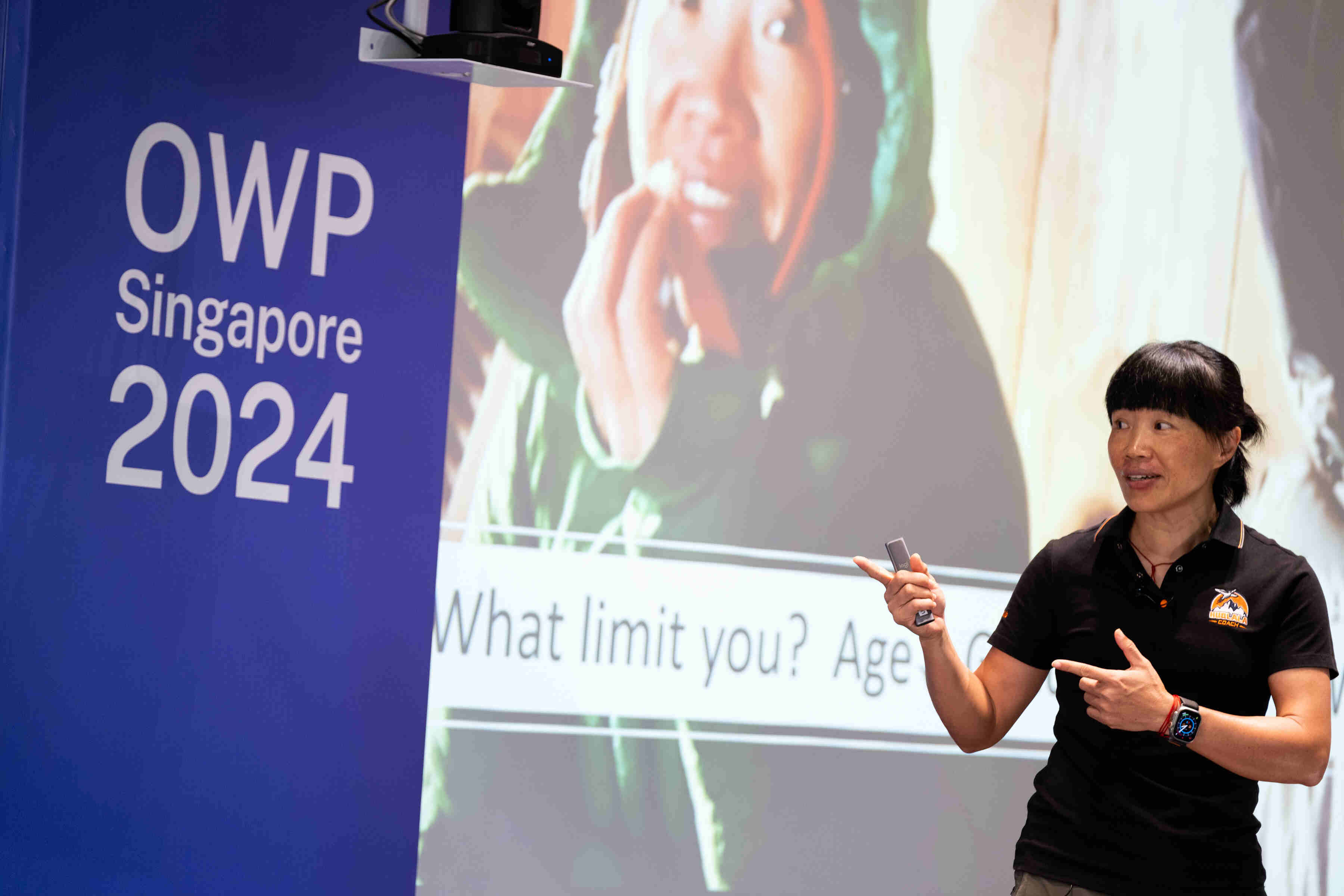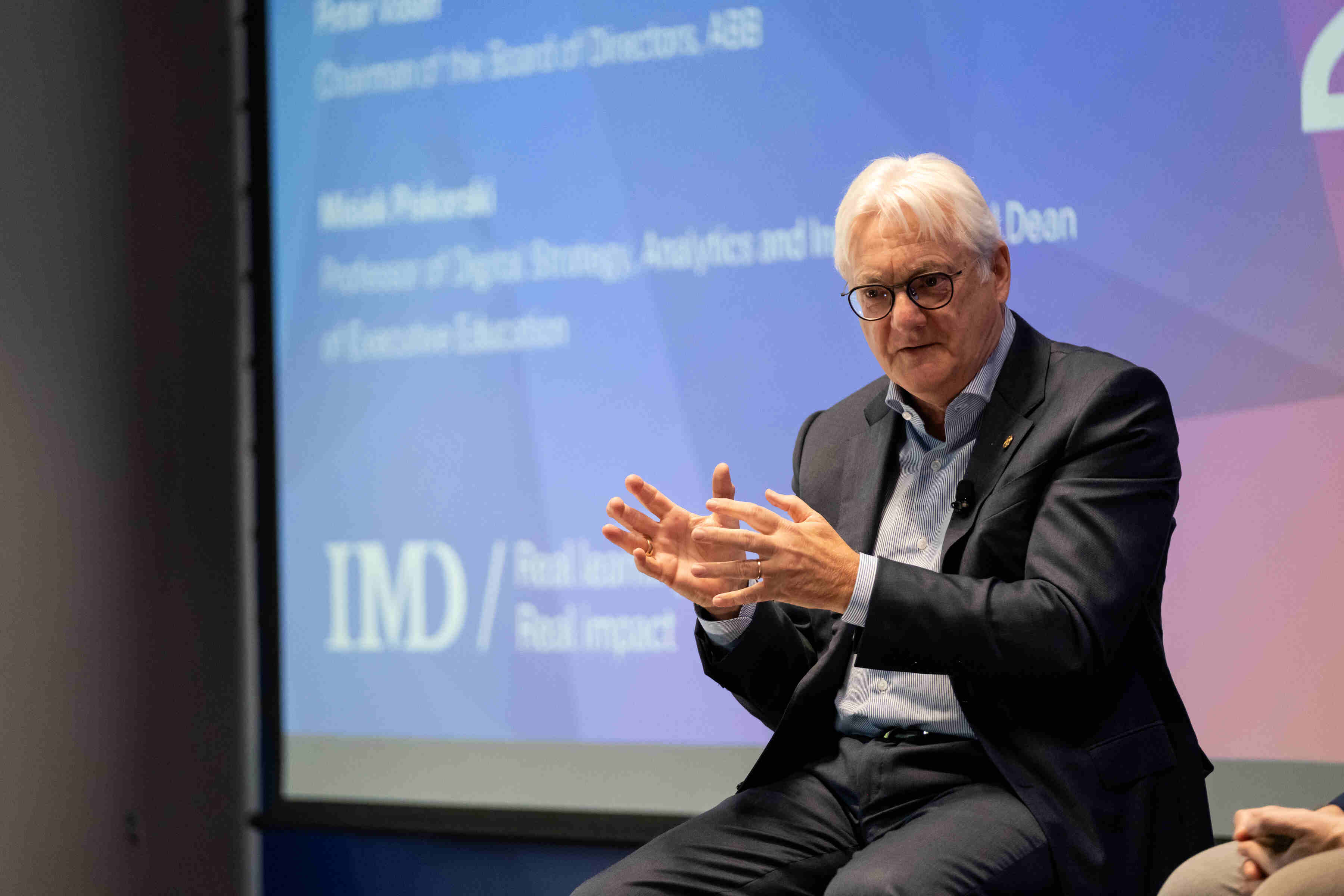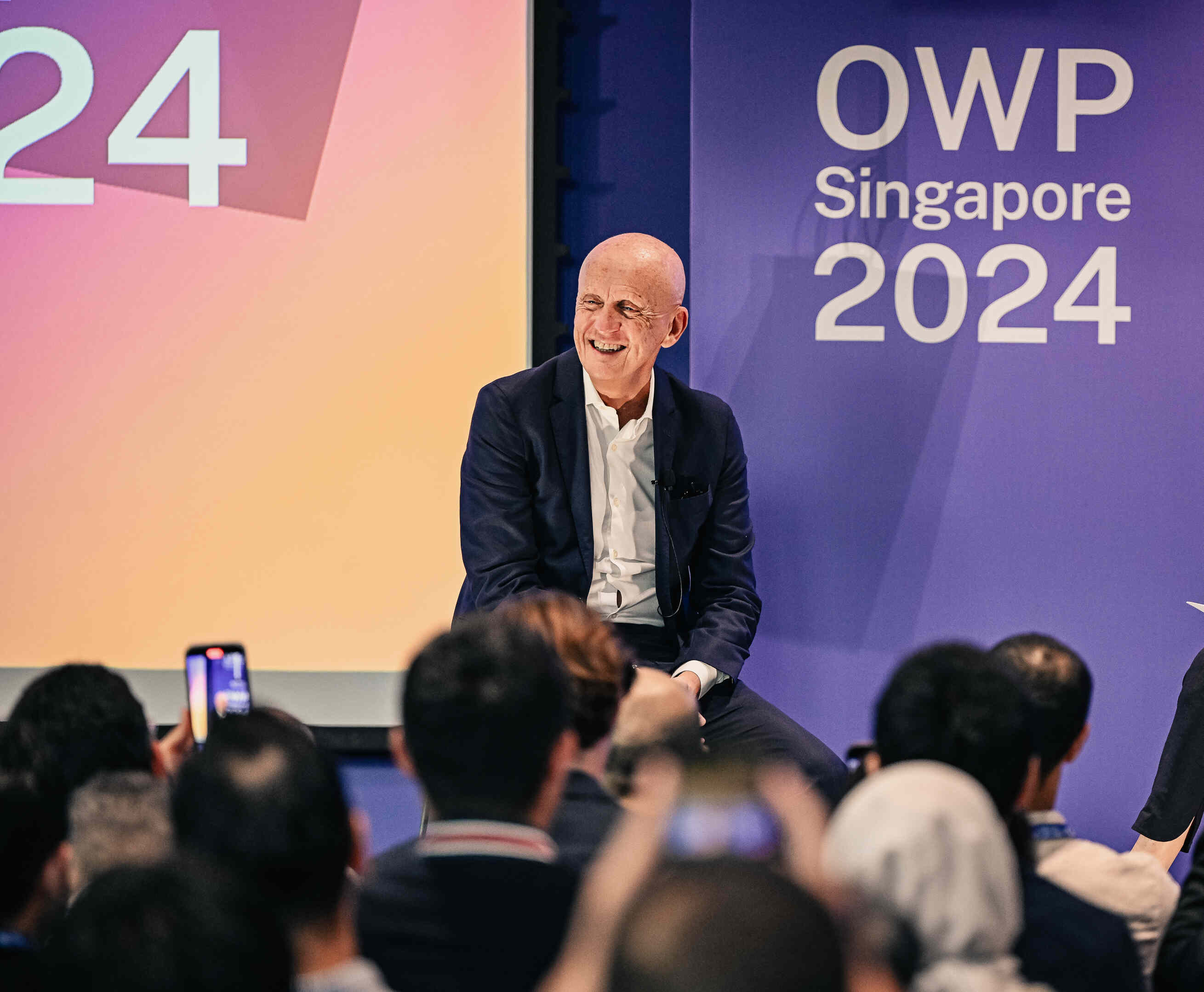17 executives participated in a session led by Kees van der Graaf, who described some of the personal and professional challenges that took him on a journey of self-discovery. What he found was his greater purpose in life and the key to balancing his life around his purpose, and at the session he offered suggestions on how participants may do the same.
Defining moments have three characteristics: they reveal, they test, and they shape.
Joseph Badaracco
If you were to draw a graph (like Kees’s one below) plotting the significant moments in your life, there would undoubtedly be quite a few highs and lows. But probably only a few of them could be qualified as true “defining moments,” ones that not only challenged you and forced you to rethink your assumptions, your beliefs and even your values, but also forced you to grow and change. But it’s not the moments themselves that define us; it’s how we respond to them – how we choose to redefine ourselves and restore our equilibrium – that really defines who we are.
The pressure CEOs and senior executives face can be horrific, so achieving a healthy balance is essential. But as Kees pointed out, “Balancing life is not just about balancing the amount of time you spend at work and at home; it’s about how you integrate your work, family and roles in society to help you leverage your energy and deal with the challenges that life throws your way.
A personal crisis
The defining moment that literally changed the course of Kees’s life was when his 11-year-old son was diagnosed in 1992 with a type of incurable muscular dystrophy called FSHD. Kees had always placed a great deal of importance on family life, but over the years, work had begun to consume an inordinate amount of his time and energy. His son’s illness changed the whole game and Kees has since come to discover his greater purpose in life – his true north: to find a cure for FSHD and support his family in making their lives as enjoyable as possible.
Feeling somewhat lost and frustrated at not being able to help their son get better, Kees and his wife, with the support of friends and family, founded the FSHD Foundation. The first year was tough, but while starting up the FSHD Foundation, Kees came to realize that building walls between family, work and his roles in society was not an ideal solution.
So he began to develop his three-circle model, which he explained as follows: “By allowing my three different roles as loving and caring husband and father, Unilever executive, and chairman of the FSHD Foundation to overlap, I was able to become more balanced and, therefore, more able to deal with the difficulties and issues that I was encountering in each of my different roles. If you view your roles in life holistically, I believe you will be more effective and you will be perceived as a more authentic person.”$
Leading with Courage
When Kees took over Unilever’s Ice Cream and Frozen Foods Europe (ICFE) in 2001, company surveys showed that there was little teamwork, people were afraid to speak up, and it was not an environment in which they were comfortable taking risks. Despite good financial results, Kees felt he needed to embark on a must-win battle (MWB) journey to turn things around. So he invited 45 key people to attend a one-week meeting at a remote location that was ideal for everyone to get to know each other and concentrate on defining the objectives and strategies for the coming years. In the weeks prior to the meeting, he met with each person individually to find out what their thoughts were about the business and each other, and to generally get to know the team better. “In my view, a leader has to listen and be interested in the people in the organization,” said Kees, and indeed this allowed him to begin to establish himself as a leader.
Success depended on building trusting relationships, so at the kick-off meeting, Kees invited everyone to share their “lifelines” and put all the “taboo” topics on the table. He began by sharing his own lifeline and the others followed. But before the morning was over, the group began complaining that there was no “strategy” and that the organization lacked “clarity about rules and regulations.” Kees found this troubling as he had just read the strategy document that all the managers had signed just months earlier. He challenged the group by asking, “Do you always sign documents that you don’t agree with?” Needless to say this caused an uproar. But talking openly about his feelings with the group helped them move forward. Kees explained that he had been disappointed in the group because in his view “a commitment is a commitment” and keeping promises was a key component of his value system.
For the rest of the week, Kees and the group worked to identify the MWBs, the measures they would use to track progress, and the managers that would be in charge of each MWB. Many of the silos seemed to be breaking down and a feeling of collectiveness prevailed. But what would happen once everyone had gone back to their day-to-day jobs? How could Kees ensure they were all truly committed to the plan?
The suggestions from the IMD event participants ranged from “identify the key people who have bought in and those who have bought out” to “put in place metrics and incentive systems.” What Kees did on that last morning was to lead the group through a review of the week’s journey, which was summarized on flipcharts pinned to the walls around the room. He had also mounted a large piece of paper on a separate board and said to the team, “If you are committed, put your name and a message on the board. And if you are not committed, you can have a chat with the HR people who will find you another job within Unilever or elsewhere.” There was stunned silence for a moment, but everyone signed the board, which was then hung in the main meeting room for two years as a constant reminder of the team’s commitment.
“If you want to break new ground and set new standards, you have to rethink your models, your way of doing things. You have to be brave, and you have to have the courage to do things differently, leaving old conventions behind,” explained Kees. This story also highlights the importance of leaders communicating in an appropriate and timely manner in order to get people to understand the need for change and become part of the solution (see the box for an outline of Kees’s CO4 model for driving change). But to get there the leader needs to be brave and have the courage to challenge.
Teams and teamwork
In early 2004, Kees was appointed to Unilever’s board. Then, in March 2005 he became the president of Unilever Europe and immediately held a teambuilding event with his new team, convinced that “real teams can perform miracles.” And the challenge ahead for 2005 was going to require something close to a miracle!
While 2005 was a challenging year, Unilever Europe achieved its targets.
Yet it was clear that several more challenges lay ahead – competition was intensifying, the retail trade was becoming more aggressive, the company was not growing fast enough and profitability was too low. At the beginning of summer in 2006, Kees organized a week-long retreat at IMD with the Unilever Europe Leadership team to “prepare the groundwork for 2007’s plans and budget.” Over the week they were challenged by several IMD faculty members and by one another, leading to intense discussions and conflicts. By the end of the week, it was clear that they were facing even bigger challenges in the future.
While the team focused on its short-term targets, Kees was empowered with coming up with a sustainable long-term strategic plan for Unilever Europe taking into account the outcomes of the workshop at IMD, to be shared with the team at the end of August. That summer, the Unilever Executive embarked on a strategic planning process, which led to the creation of a matrix of strategic choices. After three rounds of discussing and planning and narrowing down the focus, the Unilever Executive finally came up with a plan they were happy with and that would meet the expectations of the financial market.
They left the meeting feeling totally satisfied that they had a clear picture of the current reality and a good list of priorities and actions. The following day there would be another meeting to focus on the operational side of the business.
But back in his hotel room that evening, Kees began to reflect on the longer-term issues facing the European business. An uneasy feeling that something was not right started to engulf him. He pulled out all his notes, drew up a summary, and was shocked at the resulting picture. The plans for 11 out of the 12 categories in Western Europe were qualified as “high risk, but just manageable.” Kees concluded that “Eleven times a qualification of ‘high risk and just manageable’ could mean only one thing – it was unmanageable!” So he spent a sleepless night “creating a realistic plan for the future of Unilever Europe,” which he summarized on one sheet of paper.
It was a simple, holistic and complete but drastic plan of action that would address all the issues. He’d finished at 6 o’clock in the morning and went straight to the office, and explained his conclusions to the Group Chief Executive, despite being quite worried that he “would be kicked out of his office and that this would be the end of [his] career.” Instead, the Group Chief Executive agreed with Kees’s conclusions and suggested a reputed external consultant (Jimmy Bain of Bain & Company) that he should work with to refine the plan, which would remain confidential for the time being.
While developing the new plan with Bain & Company, Kees met with his team members individually and in small groups to share the fact base, the tradeoffs and the journey of discovery he had been on as the new plan emerged. Then, in September he organized a two-day meeting with his direct reports and Bain & Company to discuss the conclusions with everyone together in order to engage them, bring them into the plan and ensure their buy-in. The new plan involved some serious cost cutting, which included closing about 25 factories and reducing the total Unilever Europe workforce from about 55,000 to about 35,000 people. Implementing the plan would cost €3 billion, but it would be self-financing as a result of the disposal of assets, plants and entire businesses.
The resulting plan met most of its targets and prepared the business for the economic crisis that followed.
This story demonstrates the value of teams and teamwork. Team spirit needs to be cultivated, nurtured and protected because there is nothing more important in achieving your objectives than a winning team. But it is also important that a leader agree with his or her team that he or she is empowered and trusted to make the necessary decisions when appropriate. In addition, the story again shows that leaders need to be able to adapt their approach and communication style to different situations.
From defining moments to total dynamic balance
While Kees has discovered ways to keep his life in balance despite the various personal and professional challenges he has faced over the years, he points out that it is impossible to consistently achieve total balance. “As leaders we have to think in terms of dynamic balance rather than static balance. There will always be forces that will throw us out of balance, and we have to accept that from time to time, as long as we recognize it and are prepared to constantly rebalance our priorities to find a new equilibrium.” In closing, Kees offered 10 tips to help others find total dynamic balance.
The 10 key steps toward total work life balance
1. Define your real purpose in your life.2. Define your personal values.3. Identify your top five priorities.4. Make courageous decisions. This is the moment of truth – you must clear your agenda of everything that does not fit with your purpose, your values and your priorities.5. Deal with the root cause of the problem.6. Get inspiration from exceptional individuals.7. Get fit and stay fit.8. Be organized and disciplined.9. Recharge your batteries.10. Evaluate how you are doing at least once a year. |






